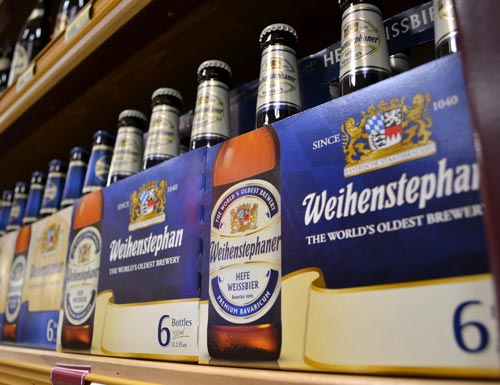
Beer Department: Get to know a style : Hefeweizen
Back to feed- Posted: 7/8/2017
- Categories: Craft Beer
Hefeweizen (pronounced hef-uh-vie-sehn) is a German style of beer whose name literally means “yeast wheat.” Hefe means yeast while weizen means wheat. Including the word hefe in the name refers to the fact that the beer is unfiltered. Every bottle and keg of hefeweizen contains beer yeast plus lots of wheat protein which contributes to its classic hazy and cloudy appearance. If you filter out the yeast sediment from a hefeweizen, it is called a kristallweizen and will have a crystal clear appearance. You also sacrifice texture and flavor by filtering the beer, so kristallweizen is fairly rare.
Hefeweizens originated in southern Germany, specifically Bavaria, and have been brewed there for hundreds of years. Hefeweizens were among the styles of beer granted an exemption from the Bavarian Purity Law, or Rhineheitsgebot, of 1516. They were exempted because the Rhineheitsgebot didn’t permit the use of wheat, but Bavarian royalty and the noble court were so enamored of the beer that they demanded access to it. In this way, hefeweizen truly is a beer for kings, though it has found plenty of love among us commoners, too! Modern production of hefeweizen began in 1872 when Schneider und Sohn began brewing operations. Hefeweizens will typically use 30-50% wheat, much of it unmalted, while the remainder will be malted barley. This prodigious use of wheat provides plenty of haziness and well as a voluminous, rocky white head of foam that lasts and lasts, sitting atop a beautiful straw, golden hued beer. Alcohol ranges from 4-5.5% abv. The beer is traditionally served in tall, slender weizen glasses that showcase the beautiful color of the beer while allowing the huge head to form. The wheat will also provide a zesty, citrusy tang to the beer.
The real star of the show, when it comes to hefeweizen, however, is the yeast. Hefeweizen yeasts belong to a specific subspecies of ale yeast that behave in a very unique way. Hefeweizen yeast is very vigorous and active, fermenting a beer very quickly and at warmer than usual temperatures while also producing aromatic and flavorful byproducts that are the signature of hefeweizen. Anyone who has ever tried hefeweizen will notice that it tastes of banana and clove. These flavors come from yeast-derived organic compounds called esters and phenols. Specifically, the banana flavor comes from an ester called isoamyl acetate while the clove flavor derives from a phenol called 4-vinyl guaiacol. So no, there isn’t actual banana or clove in your hefeweizen – the yeast just makes it taste that way.
|
Long story short, the overall impression of hefeweizen is a very well carbonated, light golden beer that’s fairly low in alcohol but packed with flavors of banana, citrus, clove, and bubblegum. It should be lightly to medium sweet across the front and middle of the palate while ideally finishing on a drier, spicy clove note. A moderate amount of acidity augments the refreshing qualities of an already insanely drinkable beer with broad appeal. The acidity also makes the beer quite food friendly, finding a home with lots of soft cheeses, salads, seafood,
|
-Eric, Eastgate





